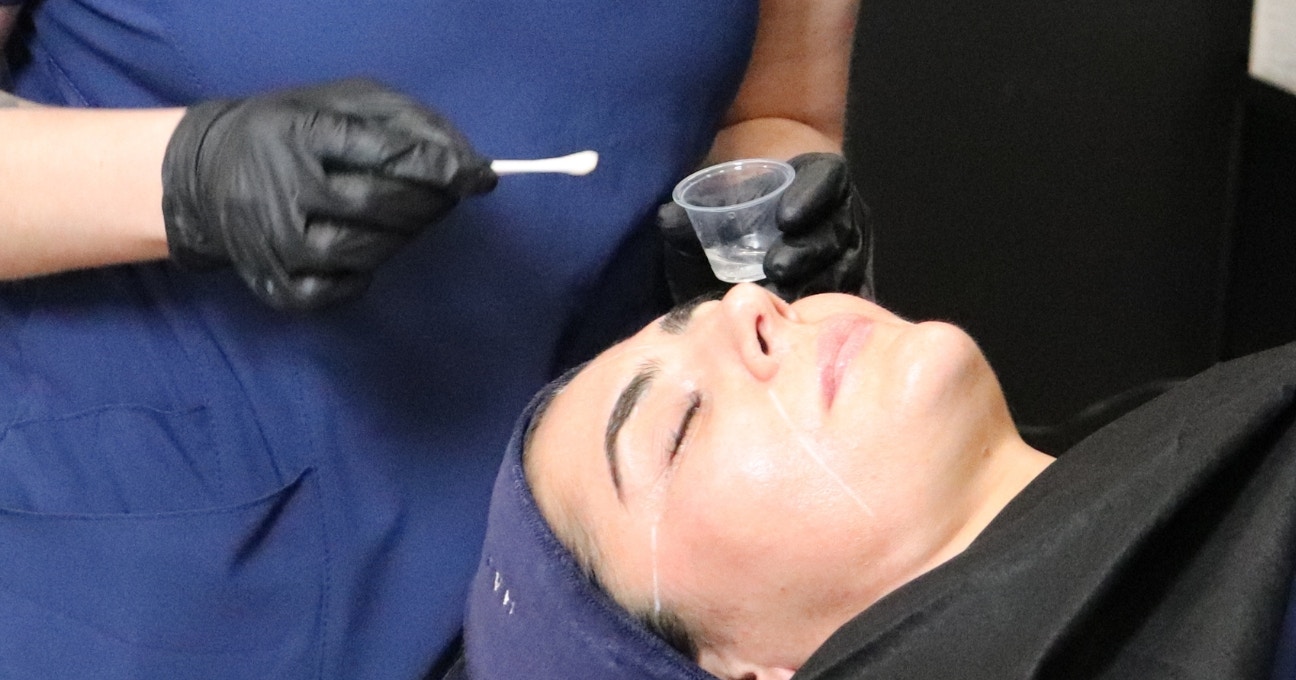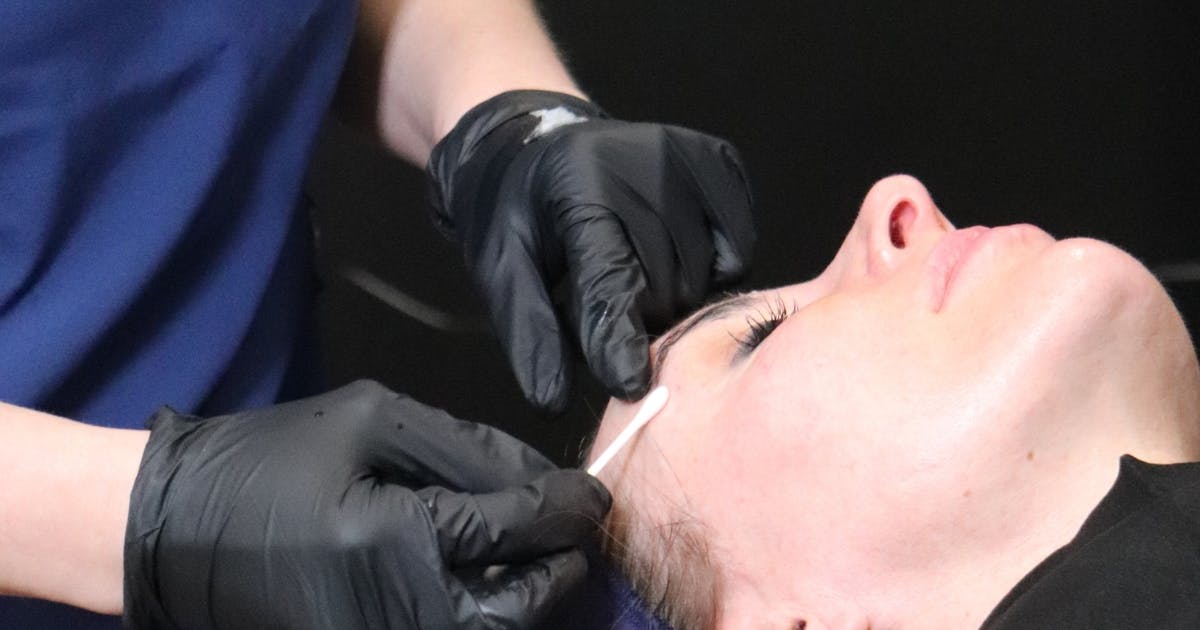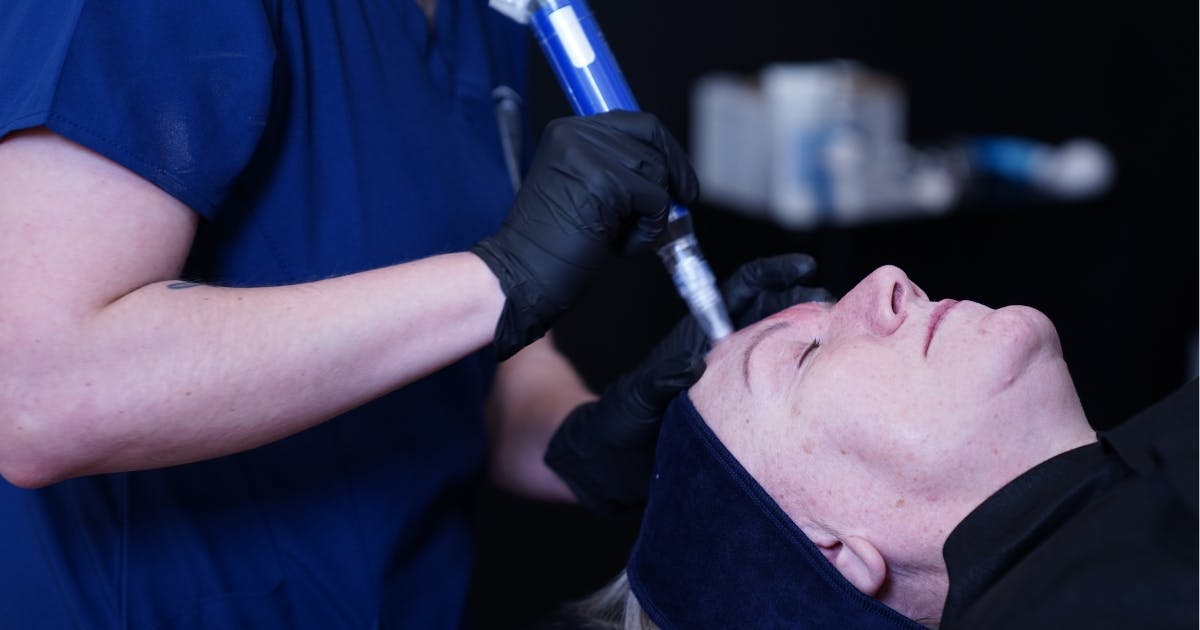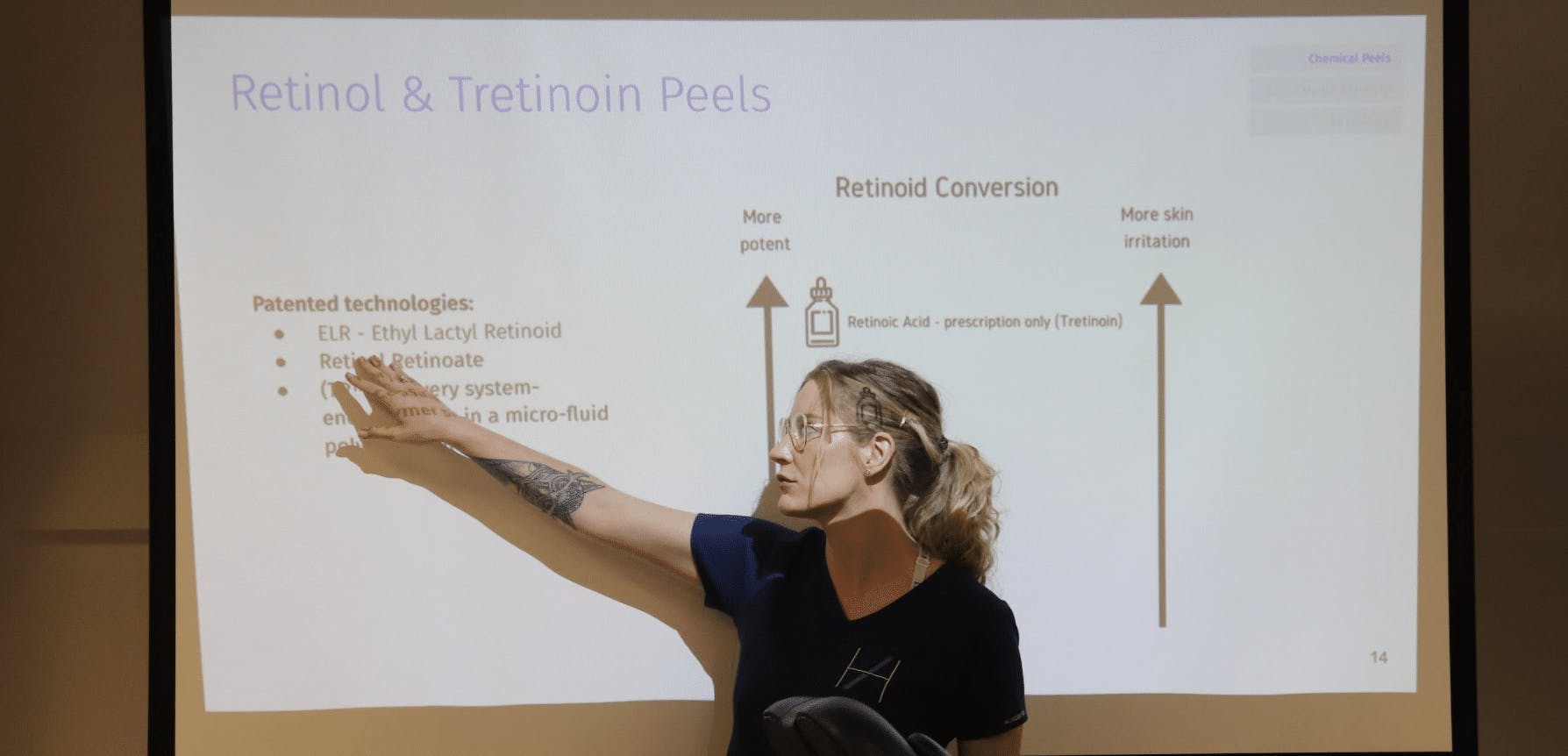Combining Injectables With Skin Treatments

Combining injectables with skin treatments can be a winning approach on a number of levels. Experienced aesthetics nurse, clinic-owner and senior clinical trainer, Lorraine Guinan has a great analogy for this: “You wouldn’t buy a new table and put it under an old, stained tablecloth”.
She explains, “Injectables are great at adding or replacing volume but if the overall skin quality is poor then the overall results will not be as good as they could be. Combining filler treatments with other treatments such as skin boosters, microneedling or chemical peels will enhance the patient’s results.”

Skin treatments usually require commitment from patients, with a cumulative benefit over time. They have the advantage of less perceived stigma than injectables, offering a great gateway service. This can open up your reach to potential clients in an increasingly skin-conscious world.
Here, two of our clinic-owning trainers, whose businesses offer skin treatments alongside injectables, provide a wealth of valuable insights…
Expert advice on combining injectables with skin treatments
Natalie Haswell (Nat) is a cosmetic nurse prescriber who runs her own CQC-registered clinic, Haswell Aesthetics. She is a senior clinical trainer at Harley Academy and an Allergan Medical Institute faculty member.
Dr Jess Chohan is the cosmetic medicine specialist behind Dr Jess Aesthetics. She is a clinical trainer at Harley Academy and is an Allergan Spark award recipient.
Why is it beneficial to provide patients with an integrated treatment plan featuring skin treatments and injectables?
Nat: “Skin treatments are really underrated and can have a huge benefit on your injectable results. Injectable treatments will only treat so much. They’ll reduce muscle movement and help to fill lines and folds with things like fillers that draw water and are hydrophilic. Whereas skin treatments will help to reduce the appearance of sun damage; they’ll help to stimulate collagen, elastin and fibroblasts within the skin. This makes the skin appear smoother and more evenly toned.”
Dr Jess: “Always, always skin before injectables! I ask every single one of my clients if they are using SPF30+ daily and if they have a skincare regime that is tailored to them. This is hugely important as you will never achieve the best results from injectables without optimal skin health. In every situation there is no excuse not to focus on skin treatments first. Skin quality and skin health should be optimised before injectables. This includes everything from skin laxity and fine lines to acne and pigmentation.”

What is your favourite treatment combination at the moment?
Nat: “My favourite treatment combinations are microneedling with anti-wrinkle injections or fillers. The microneedling can help with fine lines and wrinkles, then we use injectables to reduce muscle movement. This can give really lovely results.”
Dr Jess: “SkinPen microneedling combined with chemical peels and an advanced home skincare regime.”
What are the career benefits of offering a “skin first” combination approach to aesthetics?
Nat: “The benefit of offering a ‘skin first’ approach to aesthetics is that the patient sees that you are invested in them. Injectables are quick treatments that have quick results, whereas skin takes a long time. A professional needs to have a really good relationship with the patient; it takes commitment from both of them. It takes tweaking treatment plans to find out exactly what’s right for that person’s skin. It can make a patient feel really supported and really valued, knowing that their practitioner is investing not only in their skin but in them as a person, with their health and wellbeing.”
Dr Jess: “A ‘skin first’ approach is necessary for your patients and will optimise their results. I don’t start injectables for my patients until they have committed to improving their skin. Once they’re on a solid regime with you, they will likely always stay on it so it’s also a regular stream of income for you.”

Adding cosmetic dermatology to your aesthetics practice
So there you have it, clear, real-world advice from respected aesthetics specialists on how skin treatments can:
- Improve injectable results
- Allow you to form deeper patient relationships, improving their skin confidence
- Deliver holistic results for long-term, regular patients (who are also likely to recommend you to others)
- Build a reputation as a knowledgeable practitioner who can address various skin concerns
- Give you a steady income throughout the year, including regular skin product sales as well as treatments.
For those of you who are experienced, licensed medical aesthetics practitioners, our Cosmetic Dermatology course offers in-depth skin treatment training. This course takes 3-6 months to complete and covers a range of career-enhancing skills, including:
- Principles of topical skin therapy
- Devising personalised skin health treatment plans
- How to run a safe skin clinic
- Working with various skincare brands
- Performing microneedling, injectable skin boosting treatments including polynucleotides, simple-to-advanced chemical peels and treating hyperpigmentation and skin of colour
- The art of combining treatments for optimal results.
If you’re a doctor, dentist, clinical pharmacist, nurse or midwife looking to start out in aesthetic medicine, the Combined Level 7 Diploma & Cosmetic Dermatology course is a fantastic option.
This allows you to take our industry-leading, Master’s level injectables qualification – the Level 7 Diploma in Botox & Dermal Fillers – alongside our Cosmetic Dermatology Course. If you are starting your own business, this combination is also a great recipe for success.
Whatever level you’re currently at, we can help you to future-proof your career by building the knowledge and confidence that will steer you towards aesthetic excellence.
All information correct at time of publication
Download our full prospectus
Browse all our injectables, dermal fillers and cosmetic dermatology courses in one document
By submitting this form, you agree to receive marketing about our products, events, promotions and exclusive content. Consent is not a condition of purchase, and no purchase is necessary. Message frequency varies. View our Privacy Policy and Terms & Conditions
Attend our FREE open evening
If you're not sure which course is right for you, let us help
Join us online or in-person at our free open evening to learn more
Our Partners














STAY INFORMED
Sign up to receive industry news, careers advice, special offers and information on Harley Academy courses and services

